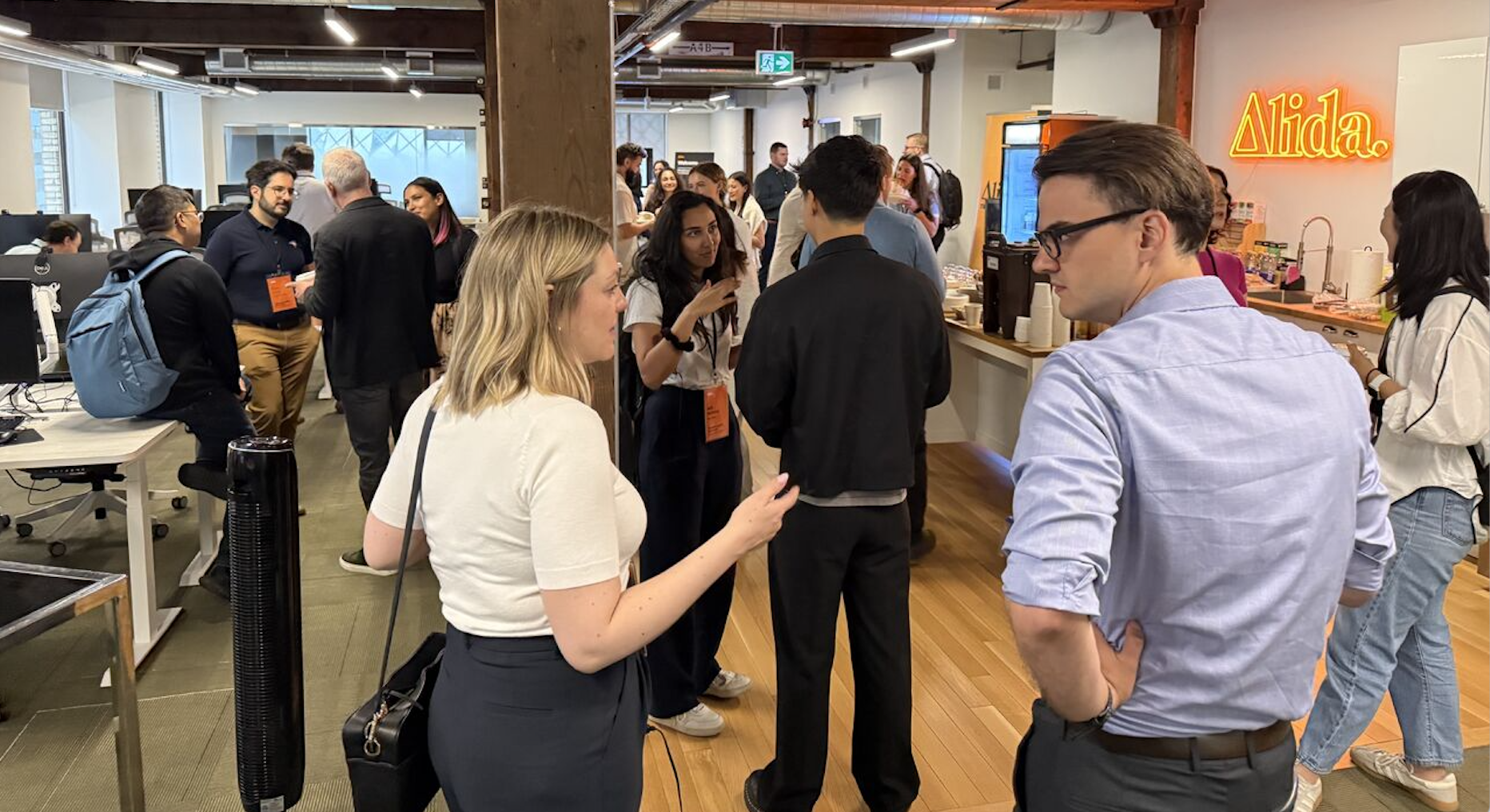In today’s world, seamless user experience (UX) is fundamental to driving online conversions and maintaining customer loyalty.
When it comes to the underlying need to understand what customers think, feel, and do, there are a number of similarities emerging between UX and insight teams. We’re starting to see UX teams and insights teams working more closely within organizations by complementing each other's skill sets and toolkits. As the two disciplines converge and teams continue to work with greater alignment, supporting UX is one of the fastest growing use cases of our Sparq platform.
User research, user testing, and usability testing help product teams identify UX design problems, discover opportunities, and learn about users in order to improve user experience.
Rather than making assumptions or relying on input from the team to inform product design, teams must move past their own biases by embracing iterative design driven by observations of real users to design the optimal user experience.
Conducting user research, user testing, and usability testing allows companies to:
- Learn about user behavior and preferences and develop personas in order to design solutions with their needs in mind
- Test, iterate, and prioritize ideas with those personas
- Ensure products are intuitive, identify problems in designs, and uncover opportunities to alleviate friction
However, a number of challenges arise as UX teams continue to strive to create a framework for customer-led decision making that underpins the design process.
- There are numerous methodologies and exciting new tools available... but narrowing them down into a scalable framework can be overwhelming.
- UX development needs to move fast and iterates quickly, often too fast to incorporate research.
- Finding people who fit the exact profile you need to talk to and engaging them in ongoing research can be time consuming and expensive.
How do you accelerate product innovation and do so with real customer data and insights rather than relying on your gut instincts or the biased opinions of employees?
You need a way to access customers regularly and in a timely manner to inform your product strategy, iterate throughout development cycles, validate go-to-market strategy, and ultimately create a better user experience for your products.
Why You Should Use Sparq Insight Communities for UX Development
Imagine being able to continuously enhance the value of the products and services you deliver by putting your customers at the heart of your designs.
Sparq is a customer insights platform that agile product teams use to collect user feedback, accelerate product innovation, and de-risk decisions. You get to co-create and test products with highly engaged, deeply profiled customers, whom you will have ongoing access to—perfect for iterative design and agile development.
So why should your product team use Sparq for UX development?
- Progressive Profiling: With Sparq, you gain always-on access to deeply profiled participants so you can find the right persona quickly for both qualitative and quantitative UX research.
- Longitudinal Access: Use this platform to leverage multi-phased methodologies and track how usage, preferences, and attitudes change over time and underpin sprints, which move too fast for traditional research.
- Safe Space: You’ll be able to tap into your Sparq insight community members to beta test early prototypes and help to spot bugs and troubleshoot in a trusting environment.
- No Cost per Use: With a Sparq insight community, you have access to an on-demand sample, which you can tap into as often as you need.
- Flexible: Customers are available for a range of methodologies. You can also leverage integrations with Sparq and other tools (offline research, IDIs, conference call software, user testing platforms, evaluation software, etc.) to further enhance your UX research capabilities.
- More Value: Beyond UX, user feedback collected using Sparq can also inform other departments and could replace some platforms they are currently using.
How to Use Sparq throughout the UX Development Cycle
The UX design process is often defined in four phases: research, design, testing, and implementation.
1. Research Phase
User research and user testing help you define which problems you need to solve by building empathy with the customer, building out personas, and exploring and discovering how they use your platform (as well as your competitors') to identify unmet needs.
Suggested community methodologies for the research phase:
- Capture potential usage occasions in the moment with forums or diary studies to reveal pain points, unmet needs, and general preferences.
- Validate problems to be solved with usage and attitudes surveys, and provide additional depth with forums or open ended questions.
- Pinpoint strengths and weaknesses of other options with a competitive analysis, making use of our highlighter tool.
- Find the right people to speak to for in-depth interviews or in-person groups to drill into their needs and reasons behind behaviors.
2. Design Phase
During the design phase, ideas are created, fleshed out, and development roadmaps are created and prioritized.
- Narrow down and prioritize options for feature and roadmap development with card sorting activities, ranking based on importance, or using an allocation slider to assign fictional resources or funds to a project scoring.
- Test and refine concepts using quantitative surveys that test ideas against key metrics, creating benchmarks over time. Inviting targeted groups of members to a forum also allows for more qualitative feedback on what’s driving appeal (or a lack of it), pinpointing potential improvements.
3. Usability Testing Phase
When the ideas are finalized and development begins, UX teams are prototyping and mocking up platforms and features, and developing intuitive solutions in an iterative manner.
While traditional market research may be too slow to underpin these sprints, UX teams using Sparq are recruiting highly targeted groups of members to help this entire usability testing process, whether this is having members on standby for tasks delivered in a forum, recruiting them for observational tasks in a lab environment, or using remote tools like our partner User Zoom.
Think about the following when designing your own toolkit:
- Automate your scheduling by using free tools like Calendly or Appointment Plus to set up in-depth interviews and focus groups. You can use our Embed Content question type so participants can schedule time without leaving the survey experience.
- Prototyping tools like InVision and Figma can also be embedded within the survey experience to allow users to give feedback on clickable mockups and wireframes. For more in-depth feedback, these can also be linked to a discussion where users can collaborate on design iterations.
- You can use the highlighter tool to have users point out both positive and confusing elements of concepts and messaging.
4. Implementation Phase
In the implementation phase, products are given the final checks before being beta tested and eventually launched.
- Give customers early access and track how usage and attitudes change over time with ongoing forums and regular short surveys. This exclusive opportunity also acts as a great incentive for participation.
- Troubleshoot and debug products by enlisting a small group of community members into a circle of trust, and get them to log any issues they find so your teams can fix them quickly.
- When a product is launched, teams can prioritize future improvements by using the community to drill into the "why" behind usage data.
Examples of Companies Using Sparq for Product Innovation
One of our lottery & gaming customers uses Sparq to understand customers, test and learn, and evaluate and iterate.
- First, they identified the opportunity by understanding the proportion of their user base “group bet” complimented by in-person group observations over beer, pizza, and football.
- Next, it’s time to test and learn. Using a mocked up wireframe test, users highlight and card sort providing richer, diagnostic insight. The team uses an iterative testing forum to test interactions remotely and in the real world (i.e. the pub). They were able to beta test with 4000 members. Through the app, they tested, prioritized, and stress-tested the new platform, encouraging members to break it and flag issues.
- From here, the UX team was able to evaluate and iterate. With the ongoing feedback captured with surveys and forums, they could determine what should be added or changed.
For more detail, read the full story here.
To make truly insight-driven decisions, an Internet domain registrar and web hosting company has integrated the customer intelligence function into every step of their product development and UX workflow. The ability to deliver agile, customer-validated insight on-demand reduces risk and accelerates product innovation. Read their success story here.
For another great example, check out this blog post about how a software company partners with customers to design products.








